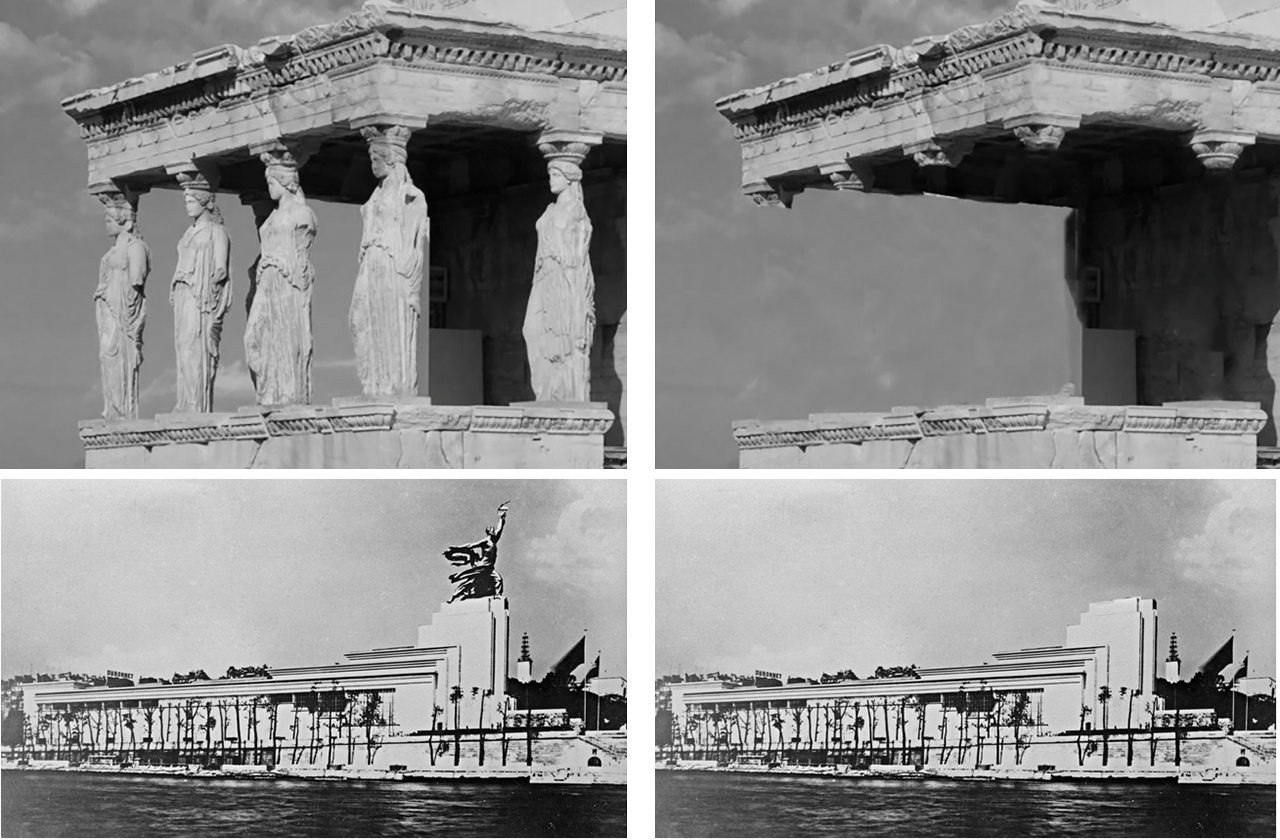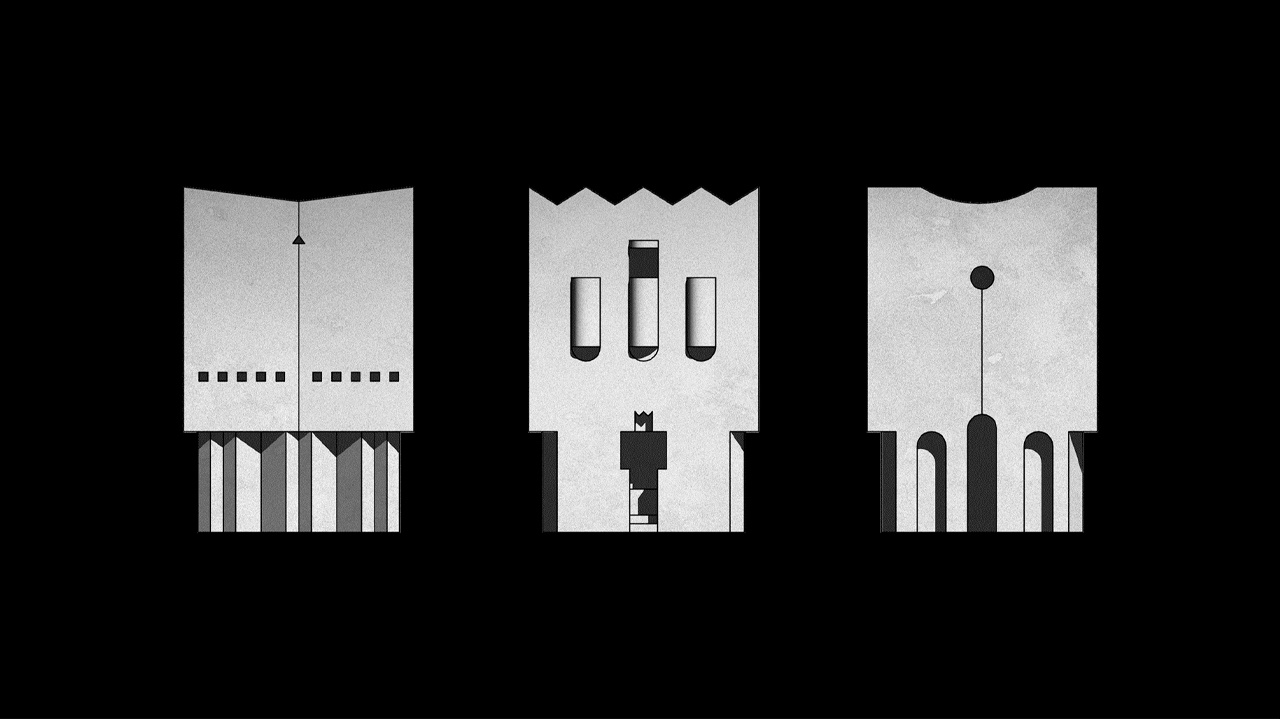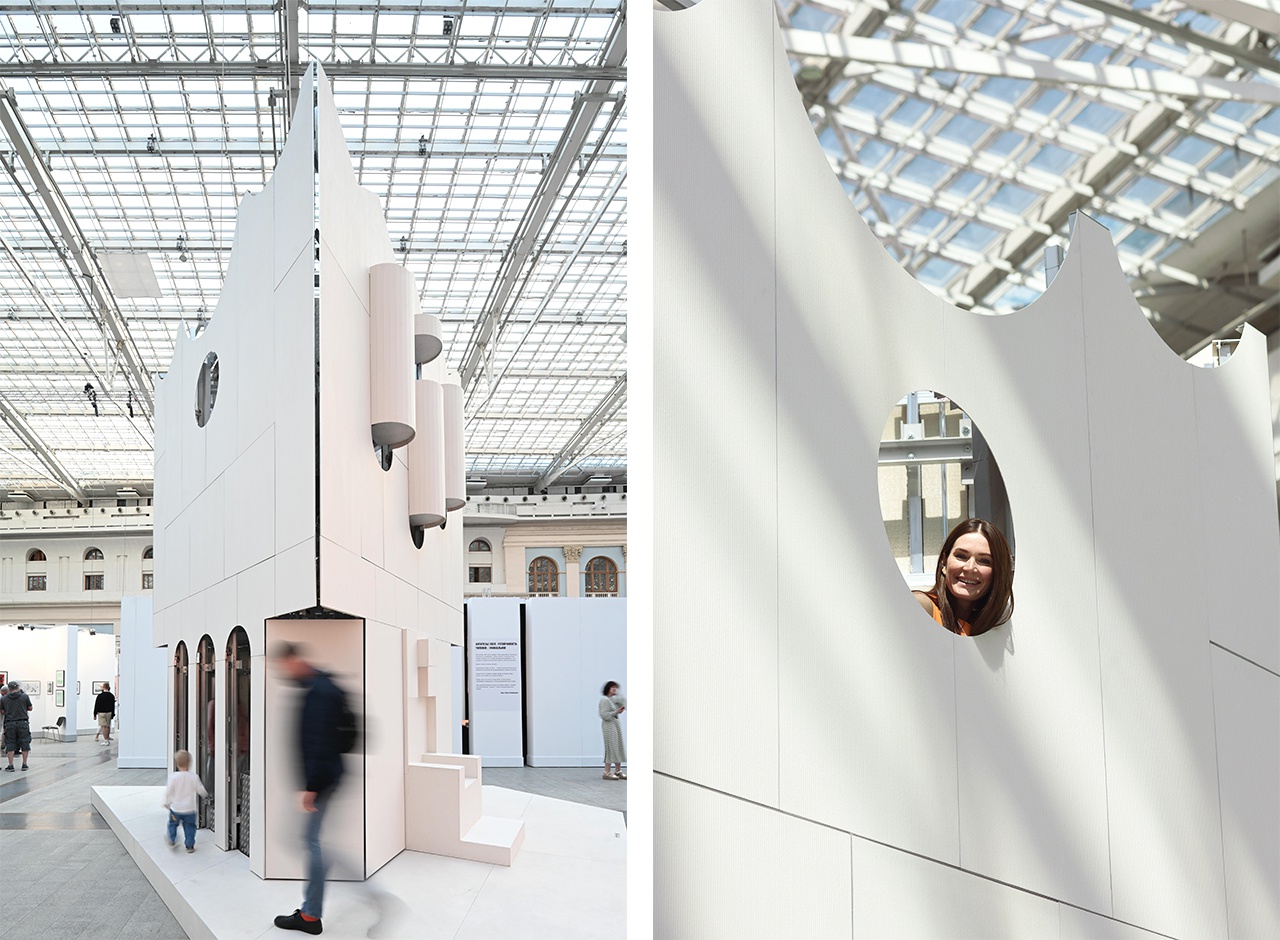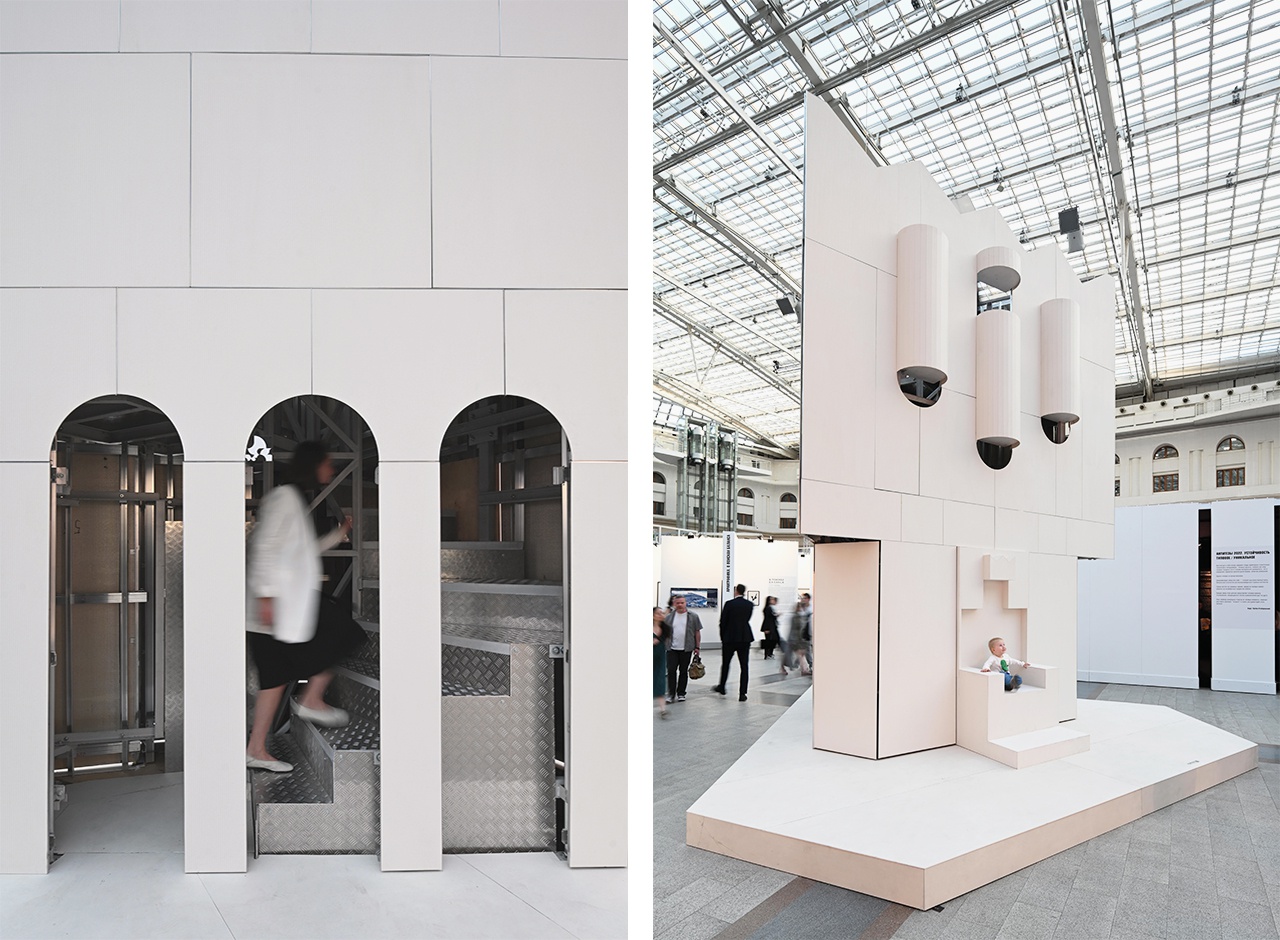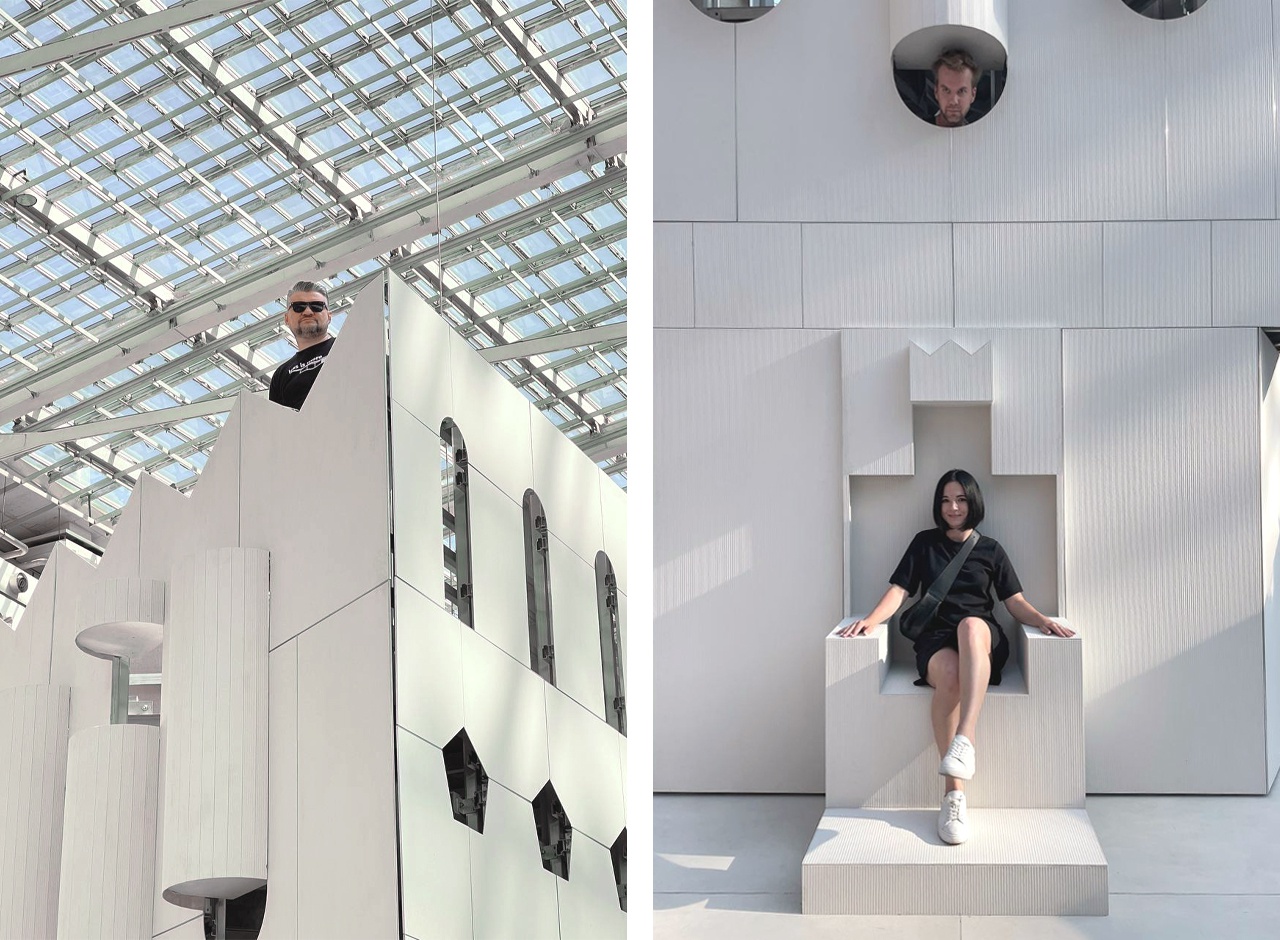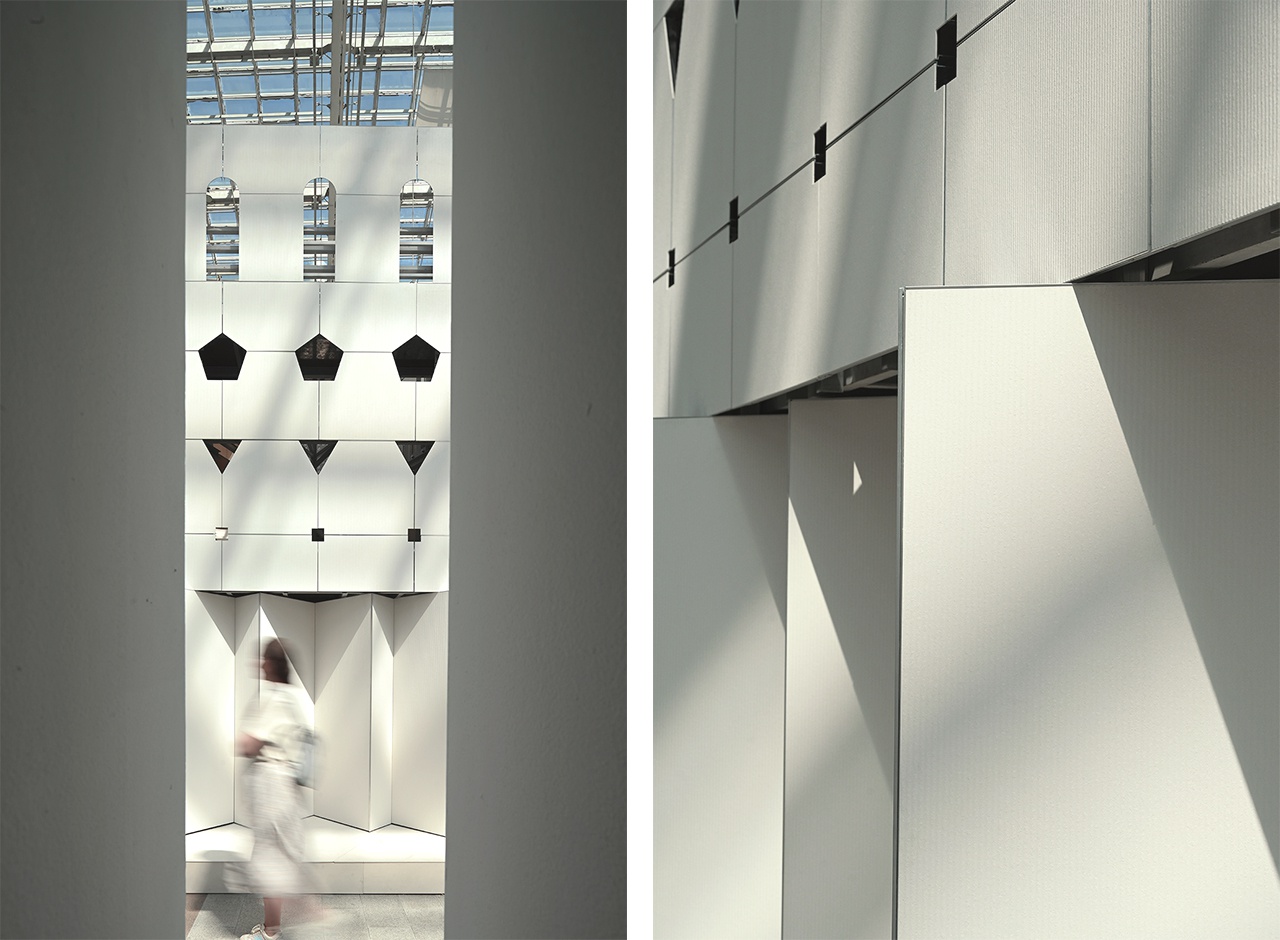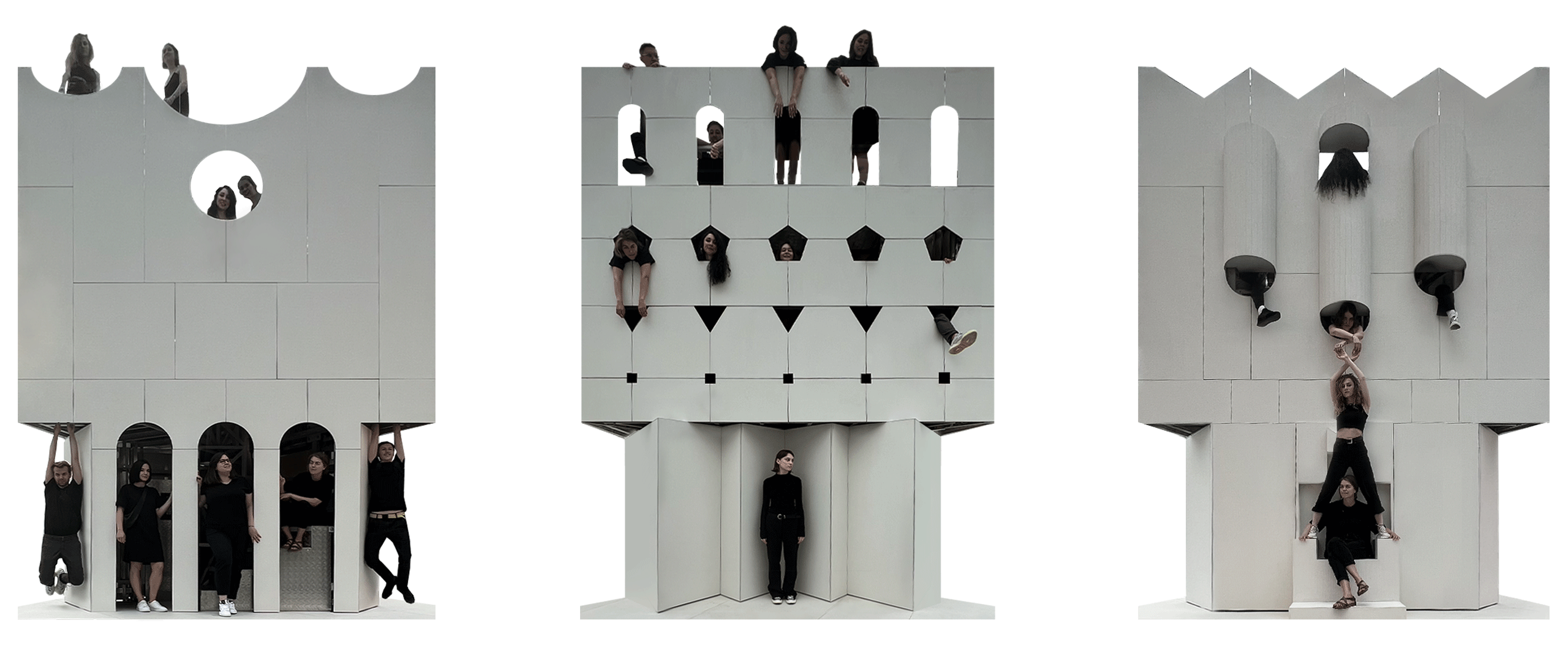Photo Stand-In
Architecture is the most anthropomorphous of the arts, inspired by a human and at the same time affecting a human stronger than other arts. From ancient times to the Modulor by Le Corbusier, all measures of length (foot, yard, arshin, span) were based on human proportions. Moreover, the very human figures and faces from ancient caryatids to mysterious mascarons of Art Nouveau to the Worker and Kolkhoz Woman become the most dramatic décor for many constructions. Architectural space without a human is desolate and meaningless, the same as a human is already almost inconceivable outside architectural surroundings.
Showing a human figure directly in architecture is not rare either. But what if we remove caryatids from the Porch of the Maidens of Erechtheum, or imagine Palazzo Poli behind the Trevi Fountain without the Oceanus and the maidens, or archways at Ploshchad Revolyutsii metro station without the bronze figures worn away from rubbing. Would the base/pavilion for the Worker and Kolkhoz Woman look natural without the sculptures?
It is obvious that without a human sculpture such objects look non-completed and not tectonic enough.
Whereas there are pieces with no sculptures the shape of which provokes people to become a part of them, to take part, to add. And the more possibilities there are to do it, the greater the chance is to see the result of such interaction in the social media feed.
The studio Megabudka decided to play with the modern interaction of an individual with the environment as the background for a picture. The pavilion is named a “Photo Stand-In” – this is what the boards with images printed on them are called that have holes on them to put your face in and turn into a character and take photos.
The studio Megabudka decided to play with the modern interaction of an individual with the environment as the background for a picture. The pavilion is named a “Photo Stand-In” – this is what the boards with images printed on them are called that have holes on them to put your face in and turn into a character and take photos.
Each of the sculpture’s three facades has ludic windows. At the base of one of them is a throne of a “paper king”. Having walked inside the pavilion, the visitors found themselves drawn into a maze, where they immediately instinctively understood – they need to take photos here.
Each of the sculpture’s three facades has ludic windows. At the base of one of them is a throne of a “paper king”. Having walked inside the pavilion, the visitors found themselves drawn into a maze, where they immediately instinctively understood – they need to take photos here.
We have devised such a pavilion, where a person gets an impulse to fit in the architecture, to become a part of it. And only if there is a human figure, the volume will be complete in composition and tectonic. The variety of variants of how humans can be put inside is limited only by the users’ fantasy. Therefore, the final image of the pavilion is always different.
We stand for responsible consumption and sustainability, so, after the end of the exhibit you should keep using the piece. It is based on the that can be assembled and disassembled. Such a pavilion will be a key element in a park, it will fit perfectly into a public interior or will make a difference at a playground.



